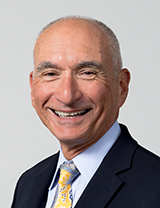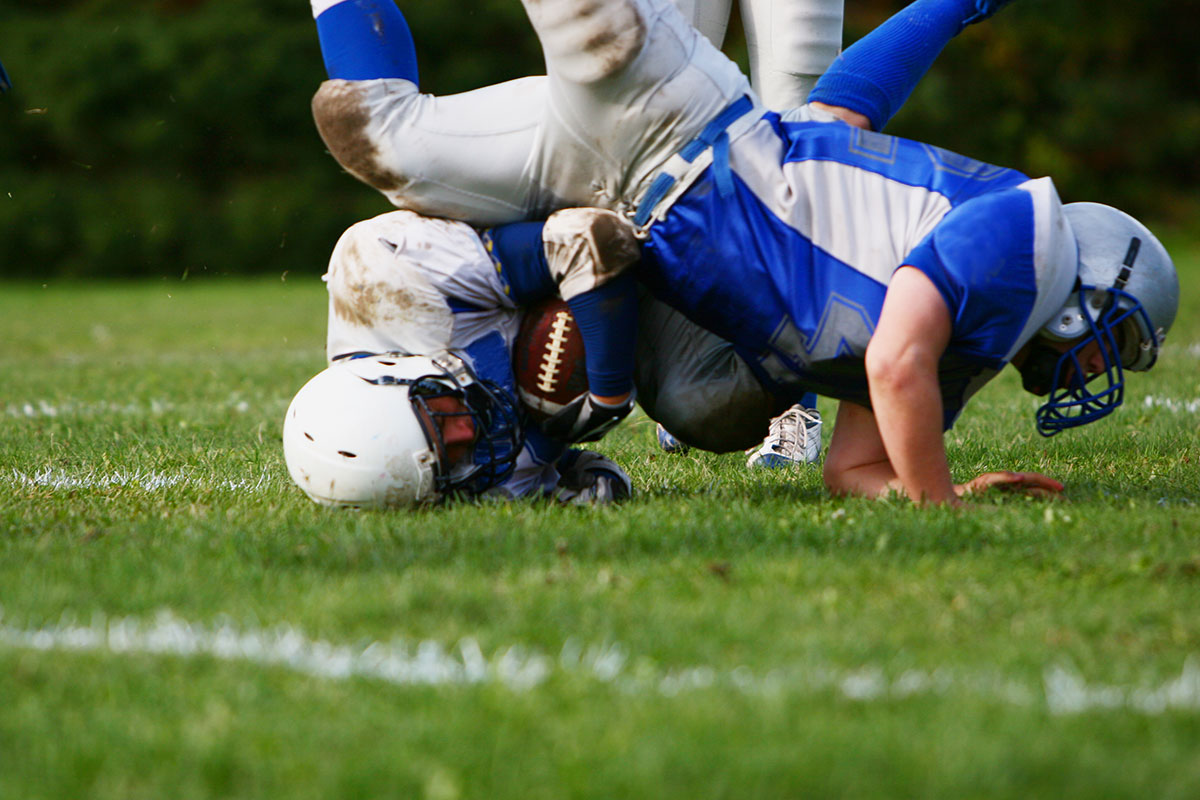Just in time for the fall sports season, doctors now have guidelines from the Centers for Disease Control and Prevention for treating concussions in children. Dr. Anthony Alessi, UConn Health neurologist and director of the UConn NeuroSport program, shares his expertise on concussions with UConn Today.

What is the significance of the new guidelines on youth concussions?
This is the first study in which experts in pediatric traumatic brain injury from around the country really analyzed not only sports-related concussions but all types of mild traumatic brain injury (TBI) in children. Next year there will be nearly 900,000 pediatric emergency room visits for mild TBI. Concussions in children can have an especially profound impact on because the brain is still developing.
What are the recommendations?
The guidelines call for several things, one of them being to have the child return to limited activity as soon as we can. The brain needs to rest following a concussion but we don’t want them isolated and avoiding stimulation for more than three days. A developing brain needs to start getting re-engaged quickly.
Another is to avoid imaging and CT scans in children when possible.
Most important is to understand and recognize that every brain injury is different. Two kids with a concussion won’t have the exact same symptoms, challenges, and recovery time. We have to look at each child differently and take into account circumstances, severity, and history when devising our treatment approach.
It’s football season again. When we talk about player safety at different age levels, you have something you call “the pyramid of football.” What do you mean by that?
We look at the top of the pyramid, where there are approximately 1,800 NFL players. We start going down, we get to the collegiate level, where we’re talking about 60,000 players; we get to high school, where we’re talking about a million or more players; but when we get to the youth sports level – middle school and younger – we’re talking about 3 million young athletes in the United States hitting each other. We focus all our changes and all our research at the top of the pyramid, when nearly all the athletes are really down at the bottom. Also, the most vulnerable athletes are at the bottom of the pyramid, because those brains are still developing. It’s bizarre how we’ve implemented safety in sports. Youth sports don’t have sideline neurotrauma specialists and team physicians, and for the most part, they don’t have certified athletic trainers either. At the youth level, all you have are coaches and maybe a parent who has some medical background. There’s a lot that needs to change at that level.
Beside football, what other sports have a relatively high concussion risk?
We see concussion in all high-velocity collision sports: hockey, men’s lacrosse, we’re starting to see it more in soccer. Obviously we see it in the combat sports like boxing and mixed martial arts, where it’s part of the sport. And the most common injury in professional bull riding is concussion, not just from falling and getting stepped on, but also from the dramatic whiplash movement of going back and forth on a bull.
What should parents/coaches/officials know about recognizing and preventing head injuries?
For Parents:
- Find out if there’s an athletic trainer associated with the team. A large study from a few years ago found that the single most protective factor in concussion was having a licensed health care professional or certified athletic trainer associated with that team.
- Interview the coach. Ask questions, especially at the youth level. If you have a coach who’s telling you how he’s going to make your child tougher, I tell people they need to run away from that person, because that’s not what this is about. It’s not about even winning. It’s about being athletic, getting away from sitting behind a TV or a computer screen, getting out and being active, and learning about teamwork.
All of us need to be mindful of what’s going on in a game, especially at the youth level. Be observant. Don’t be afraid to mention something if you see an athlete who may be injured. Don’t forget, when we deal with concussions, we’re dealing with injuries where the injured athlete may not have much insight as to even having been injured, because of the nature of the injury.
Every year I give a lecture to the CIAC (Connecticut Interscholastic Athletic Conference) football referees, to try to help them be able to recognize when an athlete’s impaired so they can get that athlete off the field and avoid further injury.
What else can we do to try to reduce the risk of concussion in young athletes?
There are good alternatives when it comes to football. I am a big proponent of young athletes playing flag football. If you think your child truly has skill to go to a high level in the sport, he can attain the throwing, running, catching, and the strategies necessary with flag football through eighth grade. I would prefer that children not play high-velocity collision sports before high school.
The one sport where we’ve been able to demonstrate a decline in concussions at the youth level has been hockey, believe it or not. Because they changed the rules: no checking until they’re at the 14U level (ages 13 and 14). We’ve seen a dramatic decline in the number of concussions in youth hockey because of that. Those young people are still building skills they’ll need to play at a higher level, like skating and stickhandling.
It’s not like children will never get to play in the NFL or NHL just because they weren’t hitting somebody when they were 8 years old.
Learn more about orthopedics and sports medicine at UConn Health.



